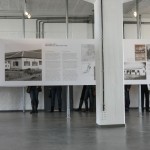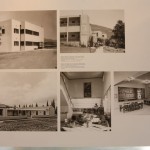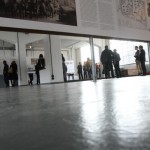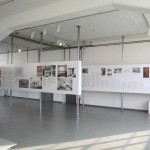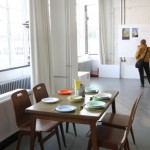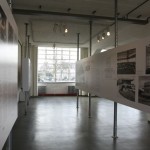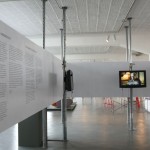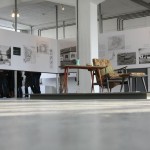Stiftung Bauhaus Dessau: Kibbutz and Bauhaus
“…I will never forget how shocked I was the first time I arrived in Degania A, one of the old kwuzoth. It was almost a textbook example of bad planning. The wind hit the dung heaps first, bringing flies and the stench initially to the stables and then to the kitchen, picking up the odours there and then carrying the whole mix to the dining halls and living quarters.”1
In his all to vivid description of the conditions at Degania A, Israeli architect Richard Kaufmann beautifully alludes to the fact that the early Kibbutz’s were very, very far removed from the carefully landscaped havens of tranquility they were to become. If no longer always are.
An important factor in this transformation was the influence of the Bauhaus school; an influence that can currently be explored in the exhibition “Kibbutz and Bauhaus” on show in Dessau.
Over the course of the 1920s and 30s some 24 students either emigrated to Palestine following their studies in Dessau, or travelled from Palestine specifically to study at Bauhaus Dessau before returning home to work.
Disentangled from the much wider “Kibbutz – Architecture without Precedent” exhibition from the Israeli Pavilion at the 2010 Venice Biennale, “Kibbutz and Bauhaus” begins by introducing seven of the these Dessau Kibbutz Bauhausler before examining in more detail the nature and structure of the original Kibbutzim, and ending with an assessment of the current state of the Kibbutz movement.
But for all “Kibbutz and Bauhaus” is about the links between the two phenomenon.
Walking around “Kibbutz and Bauhaus” one is constantly confronted by just how well the two movements fitted together, united as they were by a “We know we can improve the world. And we’re going to show you how” hands-on approach to revolution.
But also in the systematic logic involved in planning projects or the universality of the ideals one sees many parallels and interfaces. Which could lead one to argue that Bauhaus Dessau was just about the best thing that happened to the Kibbutz movement. The scope of “Kibbutz and Bauhaus” however isn’t wide enough to allow one to fully justify such a thesis. But then that’s not its aim. It’s aim is simply to cast a spotlight on a particular aspect of the Bauhaus Dessau story and the biographies of some of its graduates. Something “Kibbutz and Bauhaus” does very well.
Co-curated by Yuval Yasky and Galia Bar-Or, who developed “Kibbutz – Architecture without Precedent”, “Kibbutz and Bauhaus” is not only a wonderful introduction to a little seen aspect of Bauhaus’ global influence, but also a reminder of why the Kibbutz movement was important. And why it’s a shame that the ideals of yore and lessons learnt from the early experiments are increasingly being ignored and forgotten.
Which could also be seen as a link to Bauhaus.
Kibbutz and Bauhaus runs at Stiftung Bauhaus Dessau until April 9th 2012. Full details can be found at www.bauhaus-dessau.de
1. From “Planned Settlements: A conversation with Richard Kaufmann in Jüdische Rundschau 47 (June 15 1937)”, as quoted in the exhibition Kibbutz and Bauhaus at Stiftung Bauhaus Dessau, 2011.
- Stiftung Bauhaus Dessau: Kibbutz and Bauhaus
- Examples of works by Richard Kaufmann and Shmuel Mestechkin
- Stiftung Bauhaus Dessau: Kibbutz and Bauhaus
- Stiftung Bauhaus Dessau: Kibbutz and Bauhaus
- Self-made furniture on show at “Kibbutz and Bauhaus”
- Stiftung Bauhaus Dessau: Kibbutz and Bauhaus
- Stiftung Bauhaus Dessau: Kibbutz and Bauhaus
- Stiftung Bauhaus Dessau: Kibbutz and Bauhaus
Tagged with: Bauhaus
